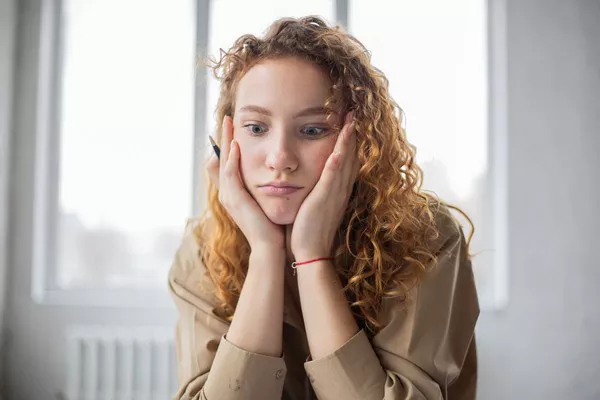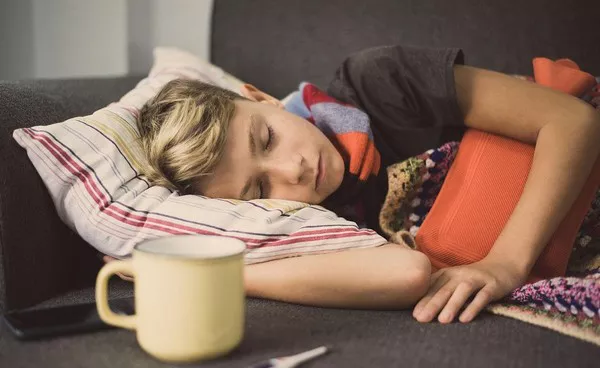Anxiety is a common experience that affects many people. It can manifest in various ways, such as excessive worry, restlessness, and physical symptoms like a racing heart or sweating. While anxiety is a normal reaction to stress, it can become overwhelming and interfere with daily life. Learning how to calm yourself from anxiety is essential for managing these feelings and improving your overall well-being. In this article, we will explore the nature of anxiety, its causes, its effects, and practical strategies to help you calm down when anxiety strikes.
Understanding Anxiety
What is Anxiety?
Anxiety is a feeling of fear or apprehension about what is to come. It can be a response to a specific situation, such as a job interview or a public speaking event. However, anxiety can also be more generalized, affecting a person’s thoughts and feelings about various aspects of life.
Types of Anxiety
There are several types of anxiety disorders, including:
Generalized Anxiety Disorder (GAD): This involves excessive worry about everyday issues, such as health, finances, and relationships.
Panic Disorder: This is characterized by recurrent panic attacks, which are sudden periods of intense fear or discomfort.
Social Anxiety Disorder: This involves a fear of social situations and being judged by others.
Specific Phobias: These are intense fears of specific objects or situations, such as heights or spiders.
Obsessive-Compulsive Disorder (OCD): This involves unwanted, recurring thoughts (obsessions) and repetitive behaviors (compulsions).
Causes of Anxiety
Anxiety can arise from various factors, including:
Genetics: A family history of anxiety disorders can increase your risk.
Brain Chemistry: Imbalances in neurotransmitters can affect mood and anxiety levels.
Personality: Certain personality traits, such as being more prone to worry, can contribute to anxiety.
Life Events: Stressful life events, such as trauma, loss, or significant changes, can trigger anxiety.
Health Issues: Certain medical conditions and medications can also lead to anxiety.
The Effects of Anxiety
Anxiety can have a profound impact on both mental and physical health. Some common effects include:
Mental Effects: Anxiety can lead to difficulty concentrating, irritability, and feelings of dread. It can also contribute to other mental health issues, such as depression.
Physical Effects: Anxiety often manifests physically. Symptoms can include a rapid heartbeat, sweating, trembling, fatigue, and sleep disturbances.
Behavioral Effects: People with anxiety may avoid certain situations or activities that trigger their anxiety. This can lead to isolation and decreased quality of life.
Strategies to Calm Yourself from Anxiety
1. Recognize Your Anxiety
The first step in managing anxiety is recognizing that you are feeling anxious. Pay attention to your body and mind. Common signs of anxiety include:
- Rapid heartbeat
- Sweating
- Restlessness
- Irritability
- Difficulty concentrating
By identifying these signs early, you can take proactive steps to calm yourself down.
2. Practice Deep Breathing
Deep breathing is one of the simplest and most effective ways to calm your body and mind. When you are anxious, your breathing often becomes shallow and rapid. Deep breathing helps counteract this response.
How to Practice Deep Breathing:
Find a Quiet Space: If possible, remove yourself from the situation that is causing your anxiety.
Sit Comfortably: Sit or lie down in a comfortable position. Close your eyes if it helps you focus.
Inhale Deeply: Take a slow, deep breath in through your nose for a count of four. Focus on filling your lungs completely.
Hold Your Breath: Hold your breath for a count of four. This pause allows your body to absorb the oxygen.
Exhale Slowly: Exhale slowly through your mouth for a count of six. Imagine releasing all the tension and anxiety with your breath.
Repeat: Continue this process for several minutes. Focus on your breath and allow your body to relax.
3. Use Grounding Techniques
Grounding techniques can help you stay present and reduce feelings of anxiety. These techniques focus your attention on the here and now, helping to distract you from anxious thoughts.
How to Use Grounding Techniques:
5-4-3-2-1 Technique: This involves using your senses to connect with your surroundings.
5 things you can see: Look around and identify five things you can see.
4 things you can touch: Notice four things you can physically feel.
3 things you can hear: Listen for three sounds in your environment.
2 things you can smell: Identify two scents you can smell (or imagine if you cannot smell anything).
1 thing you can taste: Focus on one thing you can taste in your mouth.
Physical Grounding: Focus on your feet touching the ground. Feel the weight of your body and the support of the ground beneath you.
4. Challenge Negative Thoughts
Anxiety often stems from negative thinking patterns. Challenging these thoughts can help you gain perspective and reduce anxiety.
How to Challenge Negative Thoughts:
Identify Negative Thoughts: Pay attention to the thoughts that trigger your anxiety. Write them down.
Examine the Evidence: Ask yourself if these thoughts are based on facts or assumptions. Look for evidence that contradicts your negative thoughts.
Reframe Your Thoughts: Replace negative thoughts with more balanced and realistic ones. For example, instead of thinking, “I will fail,” try, “I can do my best, and that is enough.”
5. Engage in Physical Activity
Physical activity is an effective way to release pent-up energy and reduce stress. Exercise releases endorphins, which can improve your mood and promote relaxation.
How to Incorporate Physical Activity:
Choose Activities You Enjoy: Whether it’s walking, running, dancing, or yoga, pick activities that you find enjoyable.
Set a Routine: Aim for at least 30 minutes of moderate exercise most days of the week. Consistency is key to reaping the benefits of physical activity.
Use Exercise as a Release: When you feel anxious, consider going for a brisk walk or engaging in a workout. This can help release tension and improve your mood.
6. Practice Mindfulness and Meditation
Mindfulness and meditation can help you become more aware of your thoughts and feelings, allowing you to manage them better. These practices promote relaxation and reduce stress.
How to Practice Mindfulness:
Find a Quiet Space: Choose a quiet place where you can sit comfortably.
Focus on Your Breath: Take a few deep breaths and allow your mind to settle. Focus on the sensation of your breath entering and leaving your body.
Observe Your Thoughts: As thoughts arise, acknowledge them without judgment. Simply observe them and let them pass, returning your focus to your breath.
Practice Regularly: Aim for a few minutes of mindfulness each day. Gradually increase the duration as you become more comfortable with the practice.
7. Limit Caffeine and Sugar
Caffeine and sugar can exacerbate anxiety symptoms. Reducing your intake of these substances can help you feel calmer.
How to Limit Caffeine and Sugar:
Monitor Your Intake: Keep track of how much caffeine and sugar you consume each day. Be mindful of hidden sources, such as energy drinks and sugary snacks.
Choose Alternatives: Opt for herbal teas or decaffeinated beverages instead of coffee or energy drinks. Choose whole foods over processed snacks to reduce sugar intake.
Gradually Reduce: If you are used to consuming a lot of caffeine or sugar, gradually reduce your intake to avoid withdrawal symptoms.
8. Create a Relaxation Routine
Establishing a relaxation routine can help you manage anxiety more effectively. This routine should include activities that promote relaxation and calmness.
How to Create a Relaxation Routine:
Identify Relaxation Techniques: Choose techniques that resonate with you, such as deep breathing, progressive muscle relaxation, or guided imagery.
Schedule Time for Relaxation: Set aside time each day for relaxation. This could be in the morning, during lunch, or before bed.
Create a Calming Environment: Find a quiet, comfortable space where you can relax without distractions. Consider using calming scents, such as lavender, to enhance your experience.
9. Seek Social Support
Talking to someone you trust can provide relief from anxiety. Sharing your feelings with a friend or family member can help you process your emotions.
How to Seek Social Support:
Reach Out to Friends or Family: Talk to someone you trust about what you’re feeling. Sharing your experiences can provide comfort and understanding.
Consider Professional Help: If anxiety becomes overwhelming or persistent, consider seeking help from a therapist or counselor. They can provide guidance and support tailored to your needs.
Join Support Groups: Consider joining a support group where you can connect with others facing similar challenges. Sharing experiences can provide comfort and understanding.
10. Practice Gratitude
Focusing on gratitude can shift your mindset and reduce feelings of anxiety. When you acknowledge the positive aspects of your life, it can help counteract negative thoughts.
How to Practice Gratitude:
Keep a Gratitude Journal: Write down three things you are grateful for each day. This practice can help you focus on positive experiences and shift your perspective.
Express Gratitude: Take time to express gratitude to others. Whether through a note, a text, or a simple conversation, sharing your appreciation can enhance your relationships and boost your mood.
Reflect on Positive Moments: Spend a few minutes each day reflecting on positive experiences. This can help reinforce a positive mindset and reduce the tendency to dwell on negative thoughts.
11. Limit Exposure to Stressors
Identifying and limiting exposure to stressors can help reduce anxiety. This may involve making changes in your environment or routine.
How to Limit Exposure to Stressors:
Identify Stressors: Take note of situations or people that trigger your anxiety.
Set Boundaries: If certain relationships or activities contribute to your anxiety, consider setting boundaries. This might mean saying no to social events that overwhelm you or limiting contact with negative individuals.
Create a Calm Environment: Make your living space a calming sanctuary. Declutter your space, use calming colors, and incorporate plants or soothing decor.
12. Develop Healthy Sleep Habits
Sleep is crucial for managing anxiety. Poor sleep can exacerbate anxiety symptoms, while adequate rest can help you feel more balanced.
How to Develop Healthy Sleep Habits:
Establish a Sleep Schedule: Go to bed and wake up at the same time each day, even on weekends. This helps regulate your body’s internal clock.
Create a Relaxing Bedtime Routine: Engage in calming activities before bed, such as reading, taking a warm bath, or practicing relaxation techniques.
Limit Screen Time: Reduce exposure to screens at least an hour before bedtime. The blue light emitted by screens can interfere with your ability to fall asleep.
13. Use Visualization Techniques
Visualization can be a powerful tool for calming anxiety. By imagining a peaceful scene or positive outcome, you can reduce feelings of anxiety.
How to Use Visualization Techniques:
Find a Quiet Space: Sit or lie down in a comfortable position. Close your eyes and take a few deep breaths.
Imagine a Peaceful Scene: Visualize a place that makes you feel calm and relaxed. This could be a beach, a forest, or any other serene environment.
Engage Your Senses: As you visualize, engage your senses. Imagine the sounds, smells, and sensations of being in that place.
Stay in the Visualization: Spend several minutes in this peaceful scene. Allow yourself to feel the calmness wash over you.
14. Engage in Creative Activities
Creative activities can provide an outlet for your emotions and help distract you from anxious thoughts. Engaging in art, writing, or music can promote relaxation.
How to Get Creative:
Try Different Mediums: Experiment with various creative outlets, such as drawing, painting, writing, or playing a musical instrument. Find what resonates with you.
Set Aside Time for Creativity: Schedule regular time for creative activities. This can be a great way to express yourself and take a break from anxiety.
Focus on the Process: When engaging in creative activities, focus on the process rather than the outcome. Allow yourself to enjoy the act of creating without judgment.
15. Establish a Routine
Having a daily routine can provide structure and predictability, which can help reduce anxiety. Knowing what to expect can create a sense of control.
How to Establish a Routine:
Plan Your Day: Create a daily schedule that includes time for work, relaxation, exercise, and social activities.
Stick to Your Routine: Try to follow your routine as closely as possible. This can help create a sense of stability.
Be Flexible: While routines are helpful, be open to adjustments as needed. Life can be unpredictable, and it’s okay to adapt your plans.
Conclusion
Learning how to calm yourself from anxiety is a valuable skill that can significantly improve your mental health and overall well-being. By incorporating techniques such as deep breathing, mindfulness, physical activity, and effective communication into your daily routine, you can manage anxiety more effectively.
Remember that it’s essential to find what works best for you. Everyone’s journey is unique, and it may take time to discover the most effective strategies. If you find that anxiety is overwhelming or persistent, consider seeking support from a mental health professional.
By taking proactive steps to manage your anxiety, you can regain control over your emotions, improve your relationships, and lead a more balanced and fulfilling life.
Related topics:



















